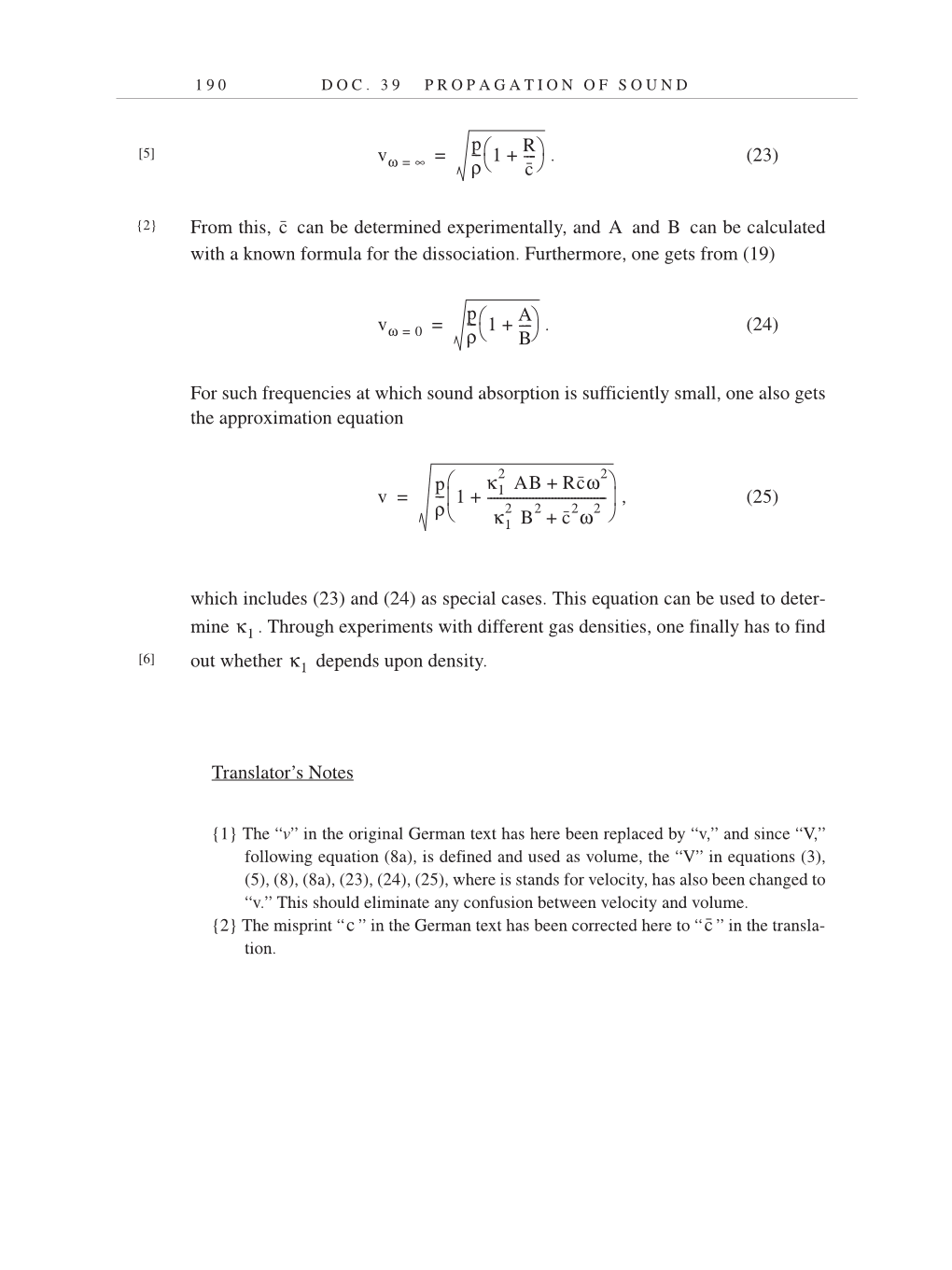1 9 0 D O C . 3 9 P R O P A G A T I O N O F S O U N D
. (23)
From this, can be determined experimentally, and and can be calculated
with a known formula for the dissociation. Furthermore, one gets from (19)
. (24)
For such frequencies at which sound absorption is sufficiently small, one also gets
the approximation equation
, (25)
which includes (23) and (24) as special cases. This equation can be used to deter-
mine . Through experiments with different gas densities, one finally has to find
out whether depends upon density.
Translator’s Notes
{1} The “v” in the original German text has here been replaced by “v,” and since “V,”
following equation (8a), is defined and used as volume, the “V” in equations (3),
(5), (8), (8a), (23), (24), (25), where is stands for velocity, has also been changed to
“v.” This should eliminate any confusion between velocity and volume.
{2} The misprint “ ” in the German text has been corrected here to “ ” in the transla-
tion.
[5]
vω
∞ =
p⎛
ρ⎝
-- -
1
R⎞
c
---⎠ - + =
c
{2}
A B
vω
0 =
p⎛
ρ⎝
-- -
1
A
B⎠
---⎞
- + =
v
p⎛
ρ⎝
-- -
1
κ1
2
AB
Rcω2⎞
+
κ1
2 B2 c2ω2
+
------------------------------------ -⎟ +
⎠
⎜
=
κ1
κ1
[6]
c c
